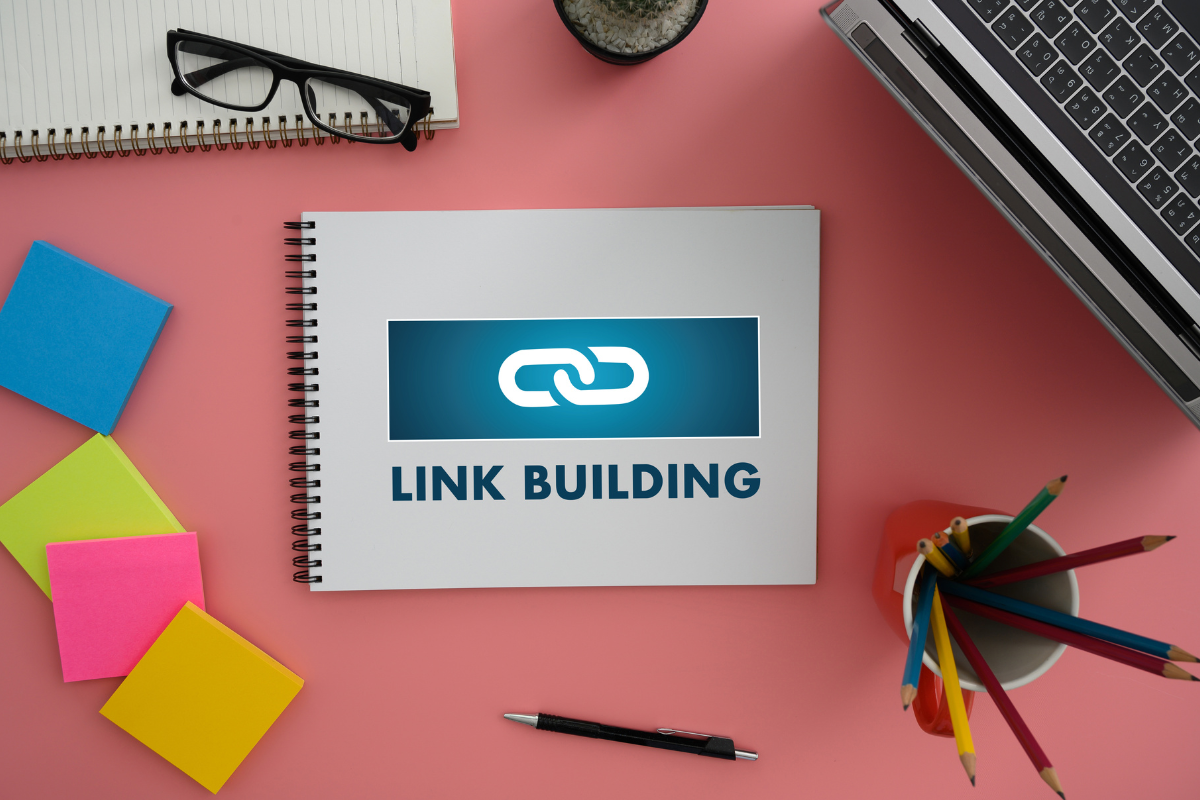Post Title
Is Your Blog Writing Turning Off Readers? Here’s What to Change
October 28, 2024
Writing a blog that grabs attention and drives traffic is more than just putting words on a page.
Many underestimate the effort needed to create engaging content, leading to frustration when readers don’t stay or traffic stalls.
But don't worry, you’re not alone. The secret lies in mastering the fundamentals and proven strategies behind effective blog writing.
Whether you're just starting or looking to improve, our full-service marketing agency can help you adopt a strategy-driven approach that turns your blog into a traffic-driving powerhouse.
Let’s dive into key techniques that can elevate your content.
The Importance of Blog Writing

Before diving into the mechanics of blog writing, it’s crucial to understand why it matters. Blogs serve as a powerful tool for communication, education, and marketing.
Here are some tips for improving blog content to maximize its impact:
- Share Knowledge: Blogs are an excellent platform for sharing expertise and insights on various topics, helping to educate readers.
- Build Authority: Consistently providing valuable content establishes your authority in your niche, gaining the trust of your audience.
- Enhance SEO: Well-optimized blogs can significantly improve your website's visibility in search engines, driving organic traffic.
- Engage with Your Audience: Blogs foster interaction between the writer and readers, allowing for a two-way conversation through comments and feedback. By actively seeking feedback, you can refine your content marketing strategy and ensure that your blog stays relevant to your audience’s needs.
- Promote Products or Services: For businesses, blog writing can effectively promote products, services, and brand values, ultimately driving sales and customer loyalty.
- Document Experiences: Personal blog writing allow individuals to share their experiences and stories, creating a sense of community and connection with like-minded readers.
Understanding these benefits is essential for anyone looking to engage in blog writing, as it highlights the potential impact of well-crafted content.
10 Tips for Writing a Blog
Creating a captivating blog requires more than just a catchy title or attractive images. Here are some essential blog writing tips to enhance your content:
1. Know Your Audience
Understanding your target readers is crucial. Conduct surveys or analyze your audience's preferences to tailor your content accordingly. Knowing your audience's demographics, interests, and pain points will allow you to create content that resonates deeply with them.
For example, if your audience consists primarily of young parents, consider writing about parenting tips, child development, or family activities. Alternatively, if your blog targets professionals, focus on topics such as productivity hacks, career advancement, or industry trends.
2. Plan Your Content
A well-structured blog post flows smoothly. Create an outline before diving into blog writing to ensure that your ideas are organized. This not only saves time but also helps you stay focused on the main points you want to convey.
Consider the following structure for your blog post:
- Introduction: Briefly introduce the topic and its relevance to your readers.
- Main Body: Divide this section into subheadings that cover different aspects of the topic.
- Conclusion: Summarize the key takeaways and encourage readers to take action.
3. Write Engaging Introductions
When blog writing, the first few sentences should hook your readers. Start with a question, interesting fact, or relatable statement to draw them in. An engaging introduction sets the tone for the rest of the blog post and piques the reader's curiosity.
Here are some tips for blog writing that can help you captivate your audience right from the start:
- Question Hook: "Have you ever wondered how some blogs manage to attract thousands of readers while others barely get noticed?"
- Interesting Fact: "Did you know that over 600 million blogs exist on the internet today, yet only a fraction achieve significant readership?"
4. Use Subheadings and Lists
Break your content into easily digestible sections using subheadings and bullet points. This not only improves readability but also helps with SEO. Readers are more likely to skim through blog posts, so subheadings provide a clear roadmap of what to expect.
For WordPress users, the Yoast SEO plugin is a valuable tool that provides a readability score for each blog post, helping you ensure your content is clear and easy to understand.
When creating lists, use bullet points or numbered lists to highlight key points or steps. For example:
- Benefits of Blog Writing:
- Builds authority
- Increases online visibility
- Engages the audience
5. Edit and Revise
Don’t underestimate the importance of proofreading. Editing your work ensures clarity and helps eliminate grammatical errors.
Consider using tools like Grammarly or Hemingway to assist with grammar and readability. Additionally, take a break after writing before revising to gain a fresh perspective on your work.
6. Include Visuals
Incorporating images, infographics, or videos can enhance your blog’s appeal and engage readers more effectively. Visual elements break up the text and make complex information easier to digest.
Consider the following types of visuals:
- Images: Use high-quality, relevant images that complement your content.
- Infographics: Summarize key information visually to enhance understanding.
- Videos: Include video tutorials or personal messages to connect with your audience.
7. Add a Call to Action
Encourage your readers to interact with your content by asking questions or prompting them to leave comments. A call to action (CTA) can guide readers on what to do next, whether it’s subscribing to your newsletter, downloading a resource, or following you on social media.
For example:
- "What do you think about these blog writing tips? Share your thoughts in the comments below!"
8. Stay Authentic
Authenticity resonates with readers. Share your unique perspective or experiences to establish a connection. Readers appreciate honesty and transparency, so don’t be afraid to share your challenges or failures alongside your successes.
9. Optimize for SEO
Utilize keywords strategically, but avoid keyword stuffing. Focus on creating valuable content that answers your audience's questions. Use tools like Google Keyword Planner or SEMrush to identify relevant keywords for your blog posts.
10. Keep Learning
Blog writing is an evolving field. Stay updated on trends and continuously seek ways to improve your blog writing skills. Attend workshops, read articles, or join blog writing communities to connect with other writers and gain new insights.
What Makes a Good Blog?

What makes a good blog? It’s a combination of factors that together create an engaging and informative experience for readers. Here are some characteristics of a good blog:
Quality Content
Above all, good blogs offer high-quality, original content that provides value to the reader. Your posts should be well-researched, informative, and engaging. Avoid duplicating content found elsewhere, as originality sets your blog apart.
Clear Structure
A well-organized blog post allows readers to follow along easily. Use headings, subheadings, and logical flow to guide your audience. The structure not only aids readability but also helps convey your message effectively.
Engaging Voice
Your blog writing style should reflect your personality while being appropriate for your target audience. Whether it’s casual, professional, or somewhere in between, consistency is key. Use a conversational tone that invites readers to connect with your content.
Valuable Insights
Sharing expert opinions, research, or personal experiences adds credibility to your blog, making it more informative. Incorporating case studies or real-life examples enhances your content and provides practical applications of your insights.
Interactive Elements
Encourage reader interaction through comments, polls, or social media shares to create a community around your blog. Engaging your audience fosters loyalty and encourages them to return for future posts.
Regular Updates
Consistency is crucial for maintaining reader interest. Regularly update your blog with fresh content to keep your audience coming back for more. Consider creating a content calendar to plan your posts in advance.
Strong Headlines
Craft compelling headlines that convey the essence of your content and entice readers to click through. Use power words, numbers, and questions to create intrigue.
SEO Optimization
Search engine optimization (SEO) is a crucial aspect of successful blog writing that can’t be overlooked. Even the best-written blog post will struggle to gain traction without proper optimization. Understanding and implementing SEO strategies will help increase your visibility in search engines, driving more organic traffic to your blog.
How to Write a Blog Post for Beginners

Blog writing for beginners can be overwhelming. Here’s a step-by-step blog writing guide on crafting a good blog post:
Step 1: Choose Your Topic
Select a topic that aligns with your interests and expertise. Ensure it resonates with your target audience. Brainstorm ideas and choose a specific angle that will engage readers.
Step 2: Research
Conduct thorough research to gather relevant information and insights. This will enhance the credibility of your content. Use reputable sources and cite them when necessary to support your claims.
Step 3: Create an Outline
Organize your thoughts by creating an outline. This helps structure your post and ensures you cover all necessary points. A simple outline might look like this:
- Introduction
- Main Body
- Subheading 1
- Subheading 2
- Subheading 3
- Conclusion
Step 4: Write a Captivating Introduction
Your introduction should grab the reader's attention and provide a preview of what they can expect. Use a hook to draw them in and set the tone for the rest of the post.
Step 5: Develop the Body
Use your outline to expand on each point. Include examples, statistics, and anecdotes to make your blog writing more engaging. Aim for a conversational tone that invites readers to connect with your content.
Step 6: Include Visuals
Incorporate images, charts, or videos that complement your content and enhance its visual appeal. Visuals can break up the text and make complex information easier to understand.
Step 7: Craft a Strong Conclusion
Summarize your key points and encourage readers to take action. Whether it’s leaving a comment, sharing your post, or exploring related articles, a compelling conclusion keeps readers engaged with your content.
Step 8: Edit and Revise
Proofread your post for grammar, spelling, and clarity. Revise sections that may need improvement or additional information. Consider seeking feedback from a trusted friend or fellow blogger.
Step 9: Publish and Promote
Once you’re satisfied with your post, publish it on your blog. Promote your content through social media, email newsletters, and other platforms to reach a wider audience.
Step 10: Engage with Your Readers
Respond to comments and engage with your audience. Building a community around your blog fosters loyalty and encourages readers to return for more content.
By following these steps, even beginners can write effective blog posts that resonate with their audience.
Personalized Blog: Tailoring Content to Your Audience

Creating a personalized blog involves tailoring your content to meet the specific needs and interests of your audience through personalized blog writing strategies. Here are some tips for writing a personalized blog post to help you achieve this:
Segment Your Audience
Understand that your audience is diverse, with varying preferences and interests. Segment your audience based on demographics, interests, or behaviors to create targeted content. For instance, if your blog covers multiple topics, consider creating categories that cater to different audience segments.
Use Analytics
Leverage analytics tools to track reader behavior and preferences. Analyze data such as page views, time spent on posts, and engagement rates to gain insights into what resonates with your audience. Use this information to inform your content strategy.
Conduct Surveys
Regularly ask your audience for feedback through surveys or polls. Understanding their interests and preferences allows you to create content that addresses their needs.
Share Personal Experiences
Incorporate personal anecdotes and experiences into your blog. Sharing your journey adds authenticity and relatability, fostering a deeper connection with your readers.
Create Targeted Content
Develop content that addresses specific pain points or challenges faced by your audience. By offering solutions, you position yourself as a valuable resource in their journey.
Engage with Your Readers
Encourage readers to share their thoughts and experiences in the comments. Engaging with your audience fosters a sense of community and encourages them to return to your blog.
Personalize Communication
Use personalized emails or messages when communicating with your audience. Tailor your content to their interests, making them feel valued and understood.
By implementing these strategies, you can create personalized content for blogs that resonates deeply with your audience, fostering loyalty and engagement.
Writing Effective Blog Posts: Strategies for Success

Writing effective blog posts requires strategic planning and execution. Here are some additional strategies to enhance your blog writing skills:
Leverage Guest Blogging
Consider inviting guest bloggers to contribute to your blog or offer to write guest posts for other blogs in your niche. Guest blogging expands your reach, introduces you to new audiences, and enhances your authority.
Repurpose Content
Maximize your content’s value by repurposing it across different formats. Transform a blog post into a video, infographic, or podcast to reach a broader audience.
Collaborate with Other Bloggers
Networking with other bloggers can lead to valuable collaborations. Consider co-hosting webinars, creating joint blog series, or promoting each other's content to increase visibility.
Create Evergreen Content
Focus on creating evergreen content that remains relevant over time. This type of content continues to attract readers long after it’s published, driving ongoing traffic to your blog.
Stay Updated on Trends
Keep an eye on industry trends and topics that are gaining popularity. Writing about timely issues can attract attention and position you as a thought leader in your niche.
Implement SEO Best Practices
Optimize each blog post for search engines by incorporating relevant keywords, meta tags, and alt text for images. This increases your blog’s visibility and drives organic traffic.
Monitor Performance Metrics
Regularly analyze your blog's performance metrics, such as page views, bounce rates, and engagement levels. Use this data to refine your content strategy and improve future posts.
Experiment with Different Formats
Don’t be afraid to experiment with different blog formats, such as listicles, how-to guides, interviews, or personal stories. Variety keeps your content fresh and engaging.
By implementing these blog writing techniques, you can enhance your blog writing and create effective blog posts that resonate with your audience.
Unlock Your Blogging Success with Visio SEO

Successful blog writing requires more than just writing. It’s about strategy, understanding your audience, and integrating SEO into your content marketing efforts. We at Visio SEO specialize in helping you elevate your blog by aligning content creation with smart SEO tactics. By focusing on valuable content that resonates with your audience, optimizing for search engines, and engaging readers, you can drive traffic and achieve your business goals. With our expertise in content marketing and SEO, your blog can become a powerful tool for visibility and growth. Don’t let your blog fall behind, contact us today and start building a strategy that works!












